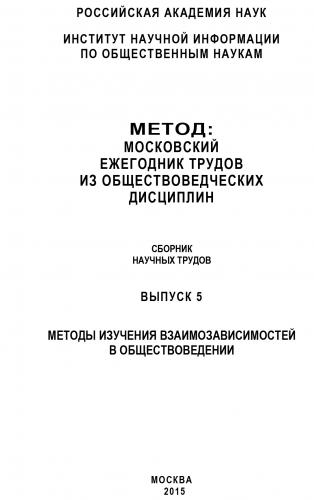Капица С.П. Общая теория роста человечества. – М.: Наука, 1999. – 136 с.
Капица С.П. Феноменологическая теория роста населения Земли // Успехи физических наук. – М., 1996. – Т. 166, № 1. – С. 63–79.
Aguirre A. On making predictions in a multiverse: conundrums, dangers, and coincidences. – 2005. – Mode of access: http://arxiv.org/abs/astro-ph/0506519 (Дата обращения: 11.11.14.)
Carter В. The anthropic principle and its implications for biological evolution // Philosophical transactions of the Royal Society of London. – L., 1983. – Vol. 310, N 1512. – P. 347–363.
Foerster H. von, Mora P.M., Amiot L.W. Doomsday: Friday, 13 November, A.D. // Science. – L., 1960. – Vol. 132. – P. 1291–1295.
Garriga J., Vilenkin A. Many worlds in one // Physical review D. – Lancaster, 2001. – Vol. 64, N 4. – С. 043511.
Gott J.R.. Implications of the copernican principle for our future prospects // Nature. – L., 1993. – Vol. 363. – P. 315–319.
Hoerner S.J. von. Population explosion and interstellar expansion // Journal of the British interplanetary society. – Wallasey, Cheshire, 1975. – Vol. 28. – P. 691–712.
Leslie J. Risking the world’s end // Interchange. – Dordrecht, 1990. – Vol. 21, N 1. – P. 49–58.
Leslie J. The end of the world: the science and ethics of human extinction. – L.; N.Y.: Routledge, 1996. – vii, 310 p.
Nielsen H.B. Random dynamics and relations between the number of fermion generations and the fine structure constants // Acta Physica Polonica. B. – Cracow, 1989. – Vol. 20. – P. 427–468
Olum K.D. Conflict between anthropic reasoning and observation // Analysis. – Oxford, 2004. – Vol. 64, N 1. – P. 1–8.
Olum K.D. The doomsday argument and the number of possible observers // The Philosophical Quarterly. – Oxford, 2002. – Vol. 52, N 207. – P. 164–184.
Page D.N. The lifetime of the universe. – 2005. – Mode of access: http://arxiv.org/abs/hep-th/0510003 (Дата обращения: 11.11.14.)
Stoeger W.R. Retroduction, multiverse hypotheses and their testability: a talk given at the symposium «Multiverse and String Theory: Toward Ultimate Explanations in Cosmology», 19–21 March 2005, Stanford Univ. – (Архив автора.)
Tegmark M. Parallel universes // Scientific American. – N.Y., 2003. – May. – P. 41–51.
Tipler F.J. Genesis: how the universe begun according to standard model particle physics. – 2001. – Mode of access: http://arxiv.org/abs/astro-ph/0111520 (Дата обращения: 11.11.14.)
Tipler F.J. The physics of immortality: modern cosmology, God, and the resurrection of the dead. – N.Y.: Doubleday, 1994. – xxi, 527 p.
Vilenkin A. Cosmological constant problems and their solutions: talks given at «The dark Universe» (Space Telescope Institute) and PASCOS-2001 in April 2001. – [S.l., 2001].
Weinberg S. Living in the multiverse: opening talk at the symposium «Expectations of a final theory» 2 September 2005, Trinity College, Cambridge. – (Архив автора.)
Связь двух пространств: географическое воображаемое людей и территория земли на географической карте
Карта обладает двумя природами, у нее, как у Януса, два «лика». В одном заключено отражение пространства. Другой это пространство творит. Отсюда и двойственная картографическая каузальность. Карта как проекция детерминирована отраженным в ней пространством. Но карта также и детерминирует пространство, выделяет в нем существенное для нас и удаляет ненужное. Наконец, карта прямо или косвенно выступает как проект нашей картины мира и его преобразования.
Двойственность визуальных образов и их геополитического значения не так часто становится предметом обсуждения в российской академической науке, хотя их эвристичность и научную значимость трудно переоценить. Картографическая продукция, само определение карты, ее роль в социальных и геополитических процессах в разное время кардинально менялись, но карты всегда оставались частью визуальной
